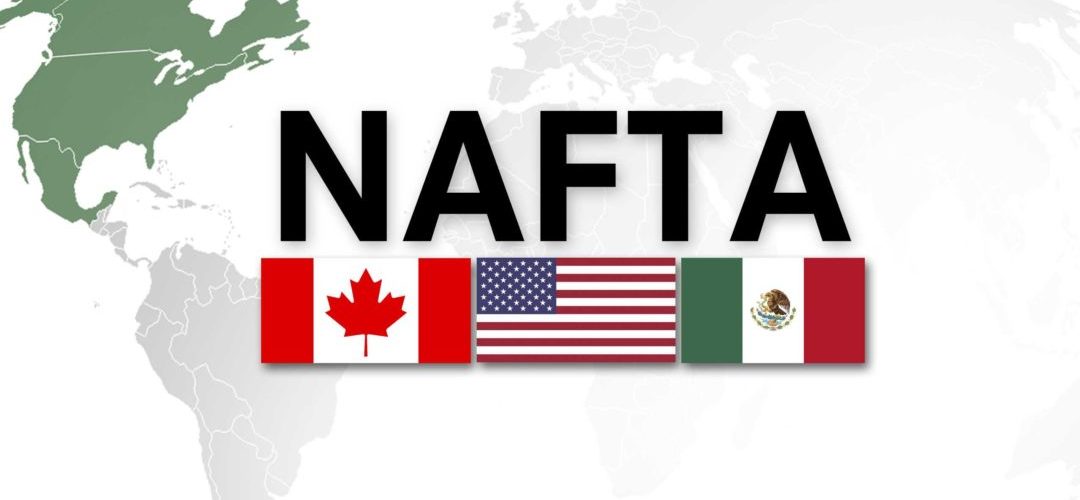Old FTA not a slam dunk!
Ottawa, ON – The next round of NAFTA talks are slated for Mexico City from November 17-21, 2017 and as the expression goes, the words may change but the song remains the same. U.S. President Donald Trump says he’ll cancel NAFTA if he can’t get a deal but his firm deadline of the end of this year has now been extended to March 2018.
Still the fourth round of talks which concluded recently in Arlington, Virginia with a public exchange of insults, were the most substantive, heated and so far the longest of the negotiations to bring about a new deal. Washington upped its ante presenting “Buy American” policies in auto manufacturing, phasing out Canadian dairy supply management and scrapping the NAFTA dispute resolution system coveted by Canada. The latter is a deal breaker and could see Canada walk away from the talks.
So without NAFTA, not much would change for Canada’s economic relations with its biggest trading partner right? We would simply dust off the old Free Trade Agreement (FTA) and continue to trade without tariffs. That may be not only naïve but terribly wrong. There appears to be considerable disagreement among experts that with the demise of NAFTA, the Canada-U.S. Free Trade Agreement of 1987 would simply pop back into place.
It’s naïve because the Trump administration started this whole process with a desire to renegotiate or scrap NAFTA if a better deal for American interests could not be reached. So if they want to renegotiate NAFTA it would be foolish to assume the old FTA would be treated any differently. As stated before, the words would change but the song would remain the same!
Another aspect is the legal questions this brings about procedure. What are the rules for cancelling NAFTA and what are the rules for bringing FTA back? As one expert was quoted, FTA was suspended but what are the rules to revive it? FTA was suspended for NAFTA, with NAFTA gone, someone or somebody has to UN-suspend FTA.
In the U.S. that responsibility would fall upon the U.S. Congress. Since taking office, President Trump has been at odds with the Congress on several fronts and is often quick to pen Presidential Executive orders in lieu of congressional support. It means that the Congress would have to have Trump’s support to re-introduce the old FTA or have an overwhelmingly two-thirds majority vote in congress to overcome a presidential veto. The U.S. Constitution does give the Congress the power over international commercial agreements like NAFTA and FTA. Usually, the Congress has merely lent that power to the president and worked out a compromise set of rules commonly known as fast-track legislation.
There are rumblings suggesting that the Congress could try to get back its rightful power, block any effort by Trump to cancel NAFTA and avoid all of this angst over NAFTA, FTA or trade in general. But experts state Trump has nothing to fear in that regard for this current version of congress has failed to pass a single piece of policy legislation since it took office.
Still, Canada cannot be complacent that FTA is an insurance policy if NAFTA goes to the grave. Too much has changed since 1987 including the U.S. political climate which almost guarantees that America would not be fine with the status quo.
So what do we have if there’s no free trade in North America at all? Tariffs would average 3.5 per cent in the United States, 4.2 per cent in Canada and 7.1 per cent in Mexico. Some experts say it would reduce Canada’s Gross Domestic Product by some 2.5 per cent over the long term. In case of a dispute between the US and Canada, or between Canada and Mexico without a FTA in place, it would be brought before the World Trade Organization (WTO).
How does this impact on your daily life? That remains to be seen!



